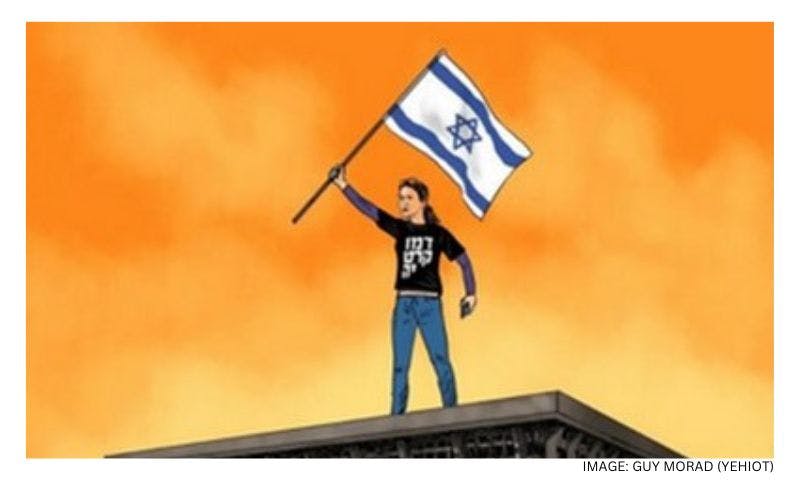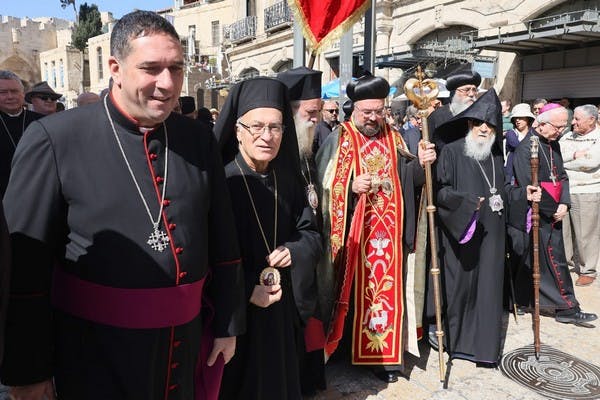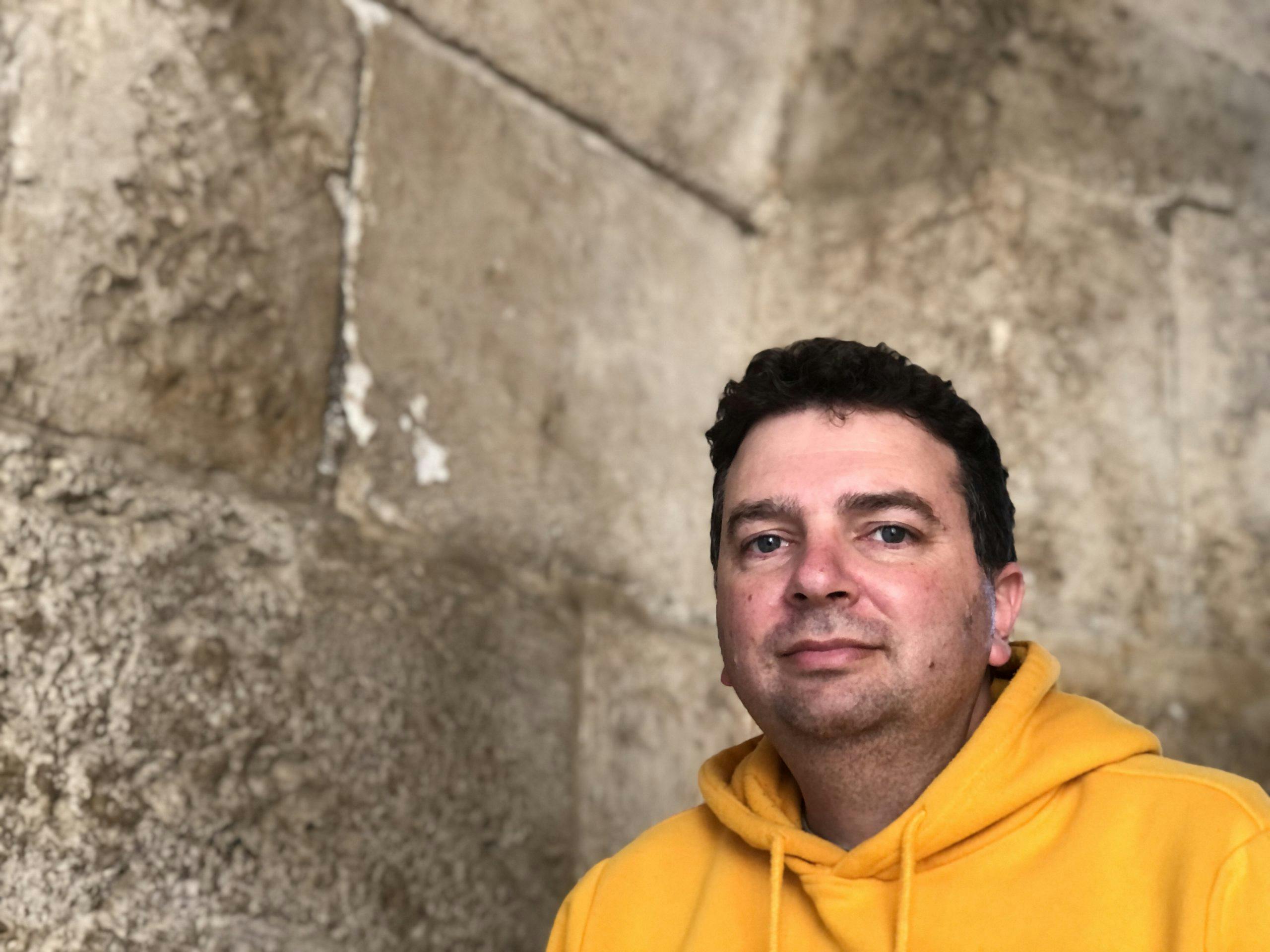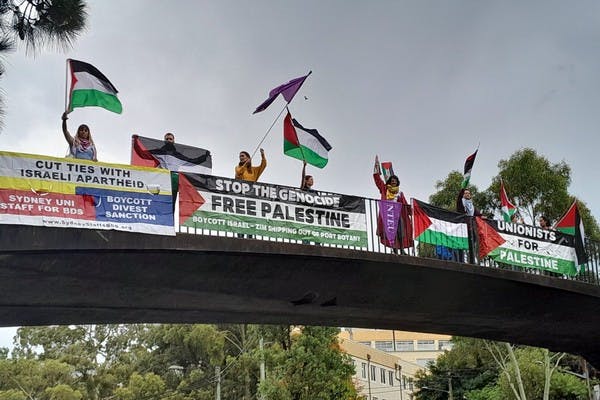Published: 29 August 2023
Last updated: 5 March 2024
By adopting the flag as their symbol, they have managed to brand their movement as one of patriotism and conservation of the status quo.
Virtually every afternoon, when Ha'aretz journalist Judy Maltz passes by the Hashalom train station in Tel Aviv, she sees a young man standing by himself on the bridge over the Ayalon highway, holding an Israeli flag that says, "Free in Our Land".
One day she asked him what he was doing. "I'm protesting," he said. “I come here most days after work and stand here for anywhere from half an hour to two hours to vent my outrage over the government of Israel.”
This short anecdote symbolises how powerful the Israeli flag has become as a symbol for preserving the status quo.
The protest movement that emerged in January to oppose the judicial reform will be remembered in Israeli history as one of the longest and most transformative in shaping the fault lines of Israeli society. Some 32 weeks into the protesters’ campaign, 60.5% of the country support their goals and strongly oppose the first law passed by the 64 MKs of the Netanyahu coalition.
In most anti-government campaigns around the world, the protesters are often marked by the establishment as being rabble rousers and unpatriotic. While the right-wing tried to do that in Israel, this line of attack ultimately fell flat, leading the democracy movement to have a wide array of support, including most parts of the mainstream media, academia, the banking sector and, especially, the high-tech sector.
By adopting the national flag as their symbol and making it synonymous with the most sustained anti-government protest we have seen in generations, they have managed to brand their movement as one of patriotism and conservation of the status quo, while depicting those who support the overhaul as dangerous revolutionaries.
Because the flag has become so synonymous with the pro-democracy movement, it’s becoming far more common to see yellow Messiah flags interspersed with the blue and white at pro-coalition demonstrations.
Meanwhile, the religious Zionist Right continue to embrace the flag no less tightly at their demonstrations against any expressions of Palestinian sovereignty in Jerusalem, especially on the Temple Mount and atop the homes of Palestinians expelled from the old city.
Yet because the flag has become so synonymous with the pro-democracy movement, it’s becoming far more common to see yellow mashiach (“Messiah”) flags now interspersed between the sea of blue and white at demonstrations in support of the current coalition.
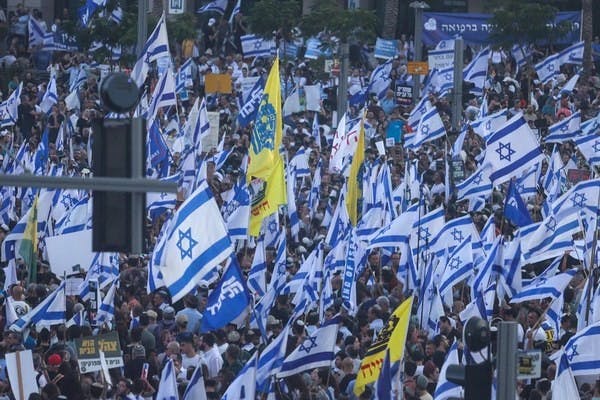
On the day before the law to remove the reasonability clause passed in the Knesset, I went to the Kotel, which was the final destination of the so called “unity march” where opponents and supporters of the judicial reform were supposed to come together to pray for peace and compromise.
While some of this did occur in song around the Kotel plaza, the closer I came to the Wall, the more I observed heated arguments between those carrying flags and those wearing tefillin. What struck me most about these arguments was hearing many of the Kotel regulars yelling quite violently at the protesters that the Kotel shouldn’t be a place to wave a symbol of protest, and that they should all “put their flags away as we pray”.
If someone had told me a year ago that I would one day witness a moment where large numbers of men who daven regularly at the Kotel would come to view the Israeli flag as a threat to their identity and religious beliefs, I would have laughed.
On August 5, the Yediot newspaper’s daily cartoon by Guy Morad featured Shikma Bressler, the Weizmann Institute particle physicist and mother of five who has become the unlikely leader of the protest movement, standing atop the Knesset waving her Israeli flag in victory. While it’s still too early to tell whether the protesters will be successful or not in achieving their goal of halting the reform and, as they put it, “to save Israeli democracy,” what’s clear already is that the symbol they choose for the movement has been one of their best decisions to date.
If the coming months lead to the suspension of the judicial reform, or its postponement to a time when the rest of the laws can pass the Knesset with the support of members from both the opposition and coalition, it will be seen as a great victory for the protest movement.
Yet many Arab Israelis will feel that should this day come, it won’t bring Israel and closer to democracy. They argue that a state that has a police force that continues to ignore the horrific gun violence plaguing Arab communities that has already taken 143 lives this year, and an army that maintains a brutal occupation of millions of Palestinians in Gaza and the West Bank can never be a liberal democracy.
For Palestinian citizens of Israel, the fact that the Israeli flag which centres a blue and white Magen David at its heart as the symbol of this protest, is precisely why they see no place for themselves within it.
For Palestinian citizens of Israel, the fact that the Israeli flag which centres a blue and white Magen David at its heart as the symbol of this protest, is precisely why they see no place for themselves within it.
Addressing the issue to those on the Israeli Left who want to see Arab inequality feature more prominently in the democracy protests in Israel, Shikma Bressler said the following at a Tel Aviv demonstration on July 29: “A judicial overhaul in the form that is happening now in Israel has also happened in Hungary, Poland, Venezuela, Ecuador, Turkey, Iran.
“None of them have an issue of yes or no to occupation, therefore the question of the occupation is not the issue in my opinion. That doesn’t mean we don’t have to strive for the good, but ultimately first must do everything possible to ensure Israel remains a democracy.”
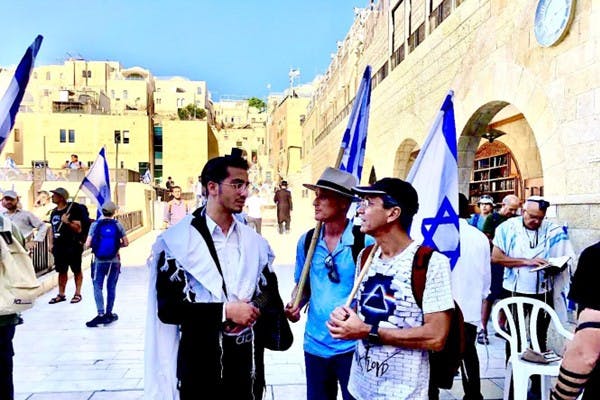
Uzi Baram affirmed this view in his Ha'aretz column: “Shikma Bressler and her colleagues are correct in excluding the occupation – as a banner – from the protests against the regime coup. If you want to attract most of the public to the protest, there is no alternative to uniting around a limited common denominator on which a large number of people will agree.”
If one were to ask Benjamin Netanyahu, Itamar Ben-Gvir, Bezalel Smotrich and Yariv Levin, it would be their fondest wish to have the protest directed against the occupation, against the killing of Arabs, against a forgiving attitude toward the so-called hilltop youth all underneath Palestinian flag. This would give them all the ammunition they need to diminish the movement in minutes.
It’s for this reason that the movement holds so strongly onto their Israeli flags.
Image: Guy Morad (Yehiot)
